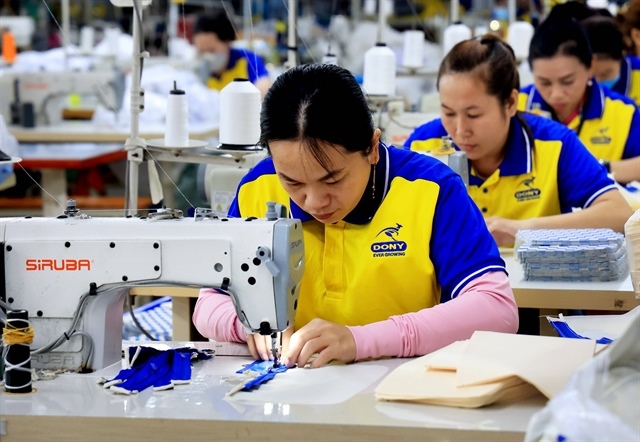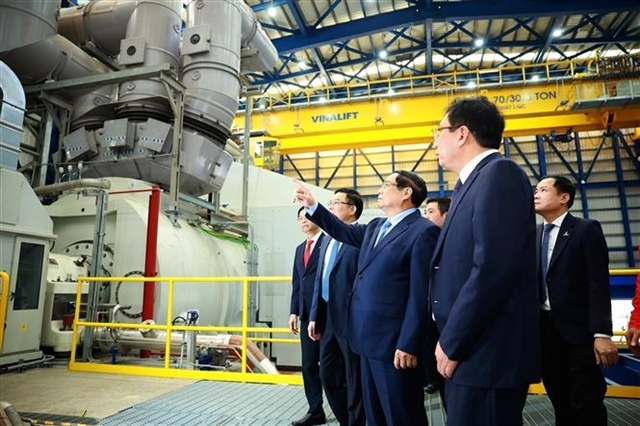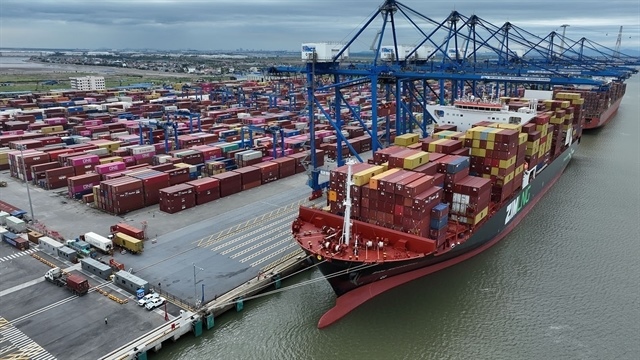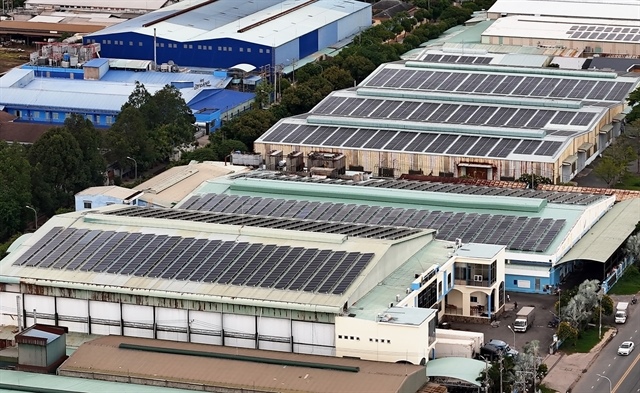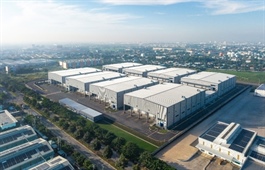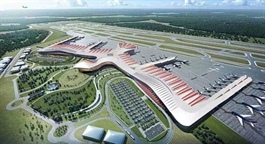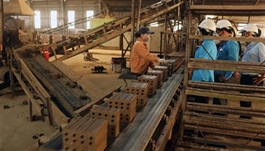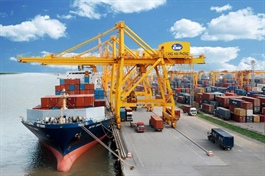Supporting industries challenged to level up
Supporting industries challenged to level up
Despite being earmarked for prioritised development in various sectors, Vietnam’s supporting industries are still facing persistent structural hurdles and market limitations.
At last week’s press conference on upcoming exhibitions involving the supporting and manufacturing industries, Vu Ba Phu, director general of the Vietnam Trade Promotion Agency under the Ministry of Industry and Trade (MoIT), noted that despite significant progress over recent years, Vietnam’s supporting industries currently meet only around 10 per cent of domestic demand for components.
“This remains a substantial challenge, especially when Vietnam spends billions of US dollars annually to import parts for domestic production,” Phu stated. “As of late 2024, Vietnam has more than 6,000 supporting industry enterprises active in textiles, automotive assembly, footwear, mechanics, and electronics. These businesses have made important contributions to Vietnam’s industrial growth and helped boost the trade surplus from $2 billion in 2017 to over $28 billion in 2024.”
In the automotive industry, the localisation rate has remained stagnant at just 7–10 per cent, far below the national targets of 40–45 per cent by the end of 2025.
Data from the MoIT’s Industry Agency shows that the country still imports 80 per cent of its auto parts. Among 377 automotive enterprises nationwide, around 170 are foreign-invested. Most domestically produced components are basic items like seats, glass, and tyres, while core technologies such as gearboxes, brake systems, and steering systems are largely sourced from abroad. Vietnam’s car assembly costs also remain higher than those in neighbouring countries like Thailand and Indonesia.
Some local companies are taking strategic steps to reverse this trend. THACO has been investing in 10 new factories since early 2024 to produce body panels, interiors, electronic parts, and more. It has already exported auto components worth $13 million to brands such as Hyundai, Ford, Toyota, and Isuzu. The company aims to become a regional manufacturing hub for ASEAN markets, leveraging the country’s network of free trade agreements.
In electronics, the situation is similar, and the MoIT estimates that the sector’s localisation rate remains at 5–10 per cent. Despite being a key export industry, most electronics products are assembled domestically using imported components.
Many domestic suppliers have yet to meet the quality or speed required by major foreign investors. Le Thi My Loan, technical manager at Sharp Manufacturing Vietnam, said the company still relies on imports for over half of its components.
“Some moulds that take 40 days in Thailand may take 60 days in Vietnam,” she explained, noting persistent delivery and quality issues among local vendors.
Truong Thi Chi Binh, general secretary of the Vietnam Association for Supporting Industries, noted that domestic firms face three major obstacles: limited access to capital, lack of connection with foreign-invested enterprises, and outdated production technologies. She stressed that policy support should move beyond incentives to include enforceable obligations.
“Vietnam needs stronger regulations to require foreign-invested companies to localise and form joint ventures with domestic suppliers,” she said. “Otherwise, we will remain an assembly base, not an industrial nation.”
Binh also highlighted the importance of establishing nationwide technical assistance centres to help local firms meet international standards. “These centres should support enterprises in quality management, process optimisation, and digital transformation,” she added.
In the rapidly emerging semiconductor sector, Vietnam is gaining ground but still faces foundational gaps. According to Do Thi Thuy Huong, executive board member of the Vietnam Electronic Industries Association, the country is becoming an attractive destination in the global chip supply chain. Multinational corporations such as Intel, Samsung, Qualcomm, and Amkor have chosen Vietnam due to its competitive labour costs, political stability, and extensive free trade agreements.
“Vietnam currently focuses on lower-end processes like assembly, packaging, and testing. However, there is a gradual shift towards integrated circuit design – one of the highest-value segments in the semiconductor value chain,” Huong said. “Yet, Vietnam still lacks any international-standard chip fabrication facility. Existing investments, such as Intel’s plant in Ho Chi Minh City and Amkor’s facility in the northern province of Bac Ninh, are concentrated in the backend stages of the process.”
Huong noted that Vietnam’s production infrastructure is still underdeveloped. “We don’t have clean rooms, advanced research and development labs, or quality control systems that meet global standards,” she said. “Vietnam ranks 71st out of 132 countries for infrastructure, indicating a significant gap between ambition and readiness.”
|
Dhamcharee Varaporn, managing director for Thailand and Vietnam, RX Tradex Vietnam is increasingly recognised as a key destination amid the ongoing global realignment of supply chains. This transformation is a testament to Vietnam’s growing stature as a dynamic manufacturing and investment hub in Southeast Asia. We are, however, aware of the challenges posed by recent global trade tensions. High US tariffs threaten to increase costs for Vietnamese exporters and reduce their competitiveness in the vital US market. Despite these challenges, Vietnam’s growth trajectory remains strong and promising for several reasons. Firstly, Vietnam’s government has demonstrated remarkable agility and strategic foresight, pursuing ambitious industrial policies such as the national strategy to develop the semiconductor industry into a global hub by 2050. This long-term vision, supported by targeted investments and incentives, continues to attract substantial foreign direct investment. Secondly, Vietnam’s manufacturing sector is rapidly embracing digital transformation, automation, and smart manufacturing technologies. These advances enhance productivity and enable Vietnamese companies to move up the value chain, reducing their reliance on low-cost advantages alone and improving resilience against external shocks. Thirdly, Vietnam’s diversified trade relationships and active participation in multiple free trade agreements provide alternative markets beyond the United States. While the United States remains a key partner, Vietnamese exporters are increasingly expanding into Europe, Asia, and the Middle East, thereby mitigating risks associated with tariff-related disruptions. Finally, there is cautious optimism that the current tariffs may serve as a negotiating tool rather than a permanent barrier. Diplomatic and trade dialogues could lead to adjustments, especially if Vietnam agrees to greater market access for US goods or other mutually beneficial arrangements. |
- 11:15 13/06/2025


